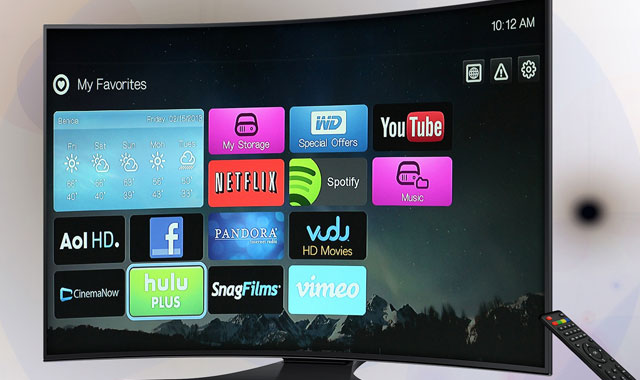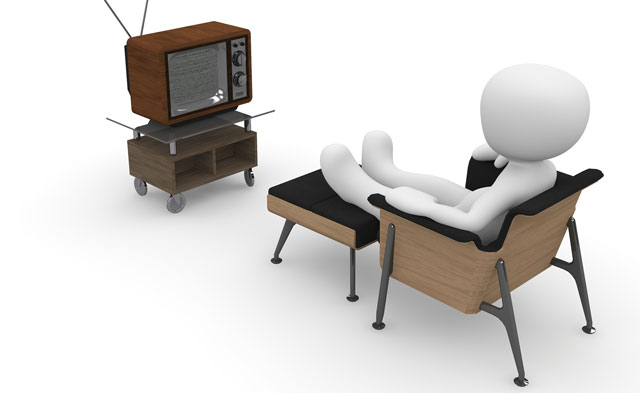
“The end of television” is a headline that’s been liberally thrown around for the past 15 years.
Indeed, the past year saw audiences becoming more and more amenable to adopting new ways to watch TV shows, with live audiences for broadcast and cable programmes declining sharply.
Even entities like American sports network ESPN — which many thought immune to these changes in audience behaviour — acknowledged subscriber losses this year. In response, Wall Street engaged in a mass sell-off of media stocks. Most rebounded by year’s end, but the volatility is indicative of the uncertainty in a sector that finds its core business model being disrupted.
But viewers are actually watching more TV than ever before. They’re simply shifting to on-demand options from cable operators and broadband services.
In the past five years, an influx of new broadband-delivered offerings has driven changes in audience behaviour that challenge the businesses of traditional broadcast and cable television channels. Likewise, cable providers find themselves scrambling to adapt to new competition from leaner channel packages that offer flexible pricing options.
Contrary to what the headlines often suggest, the Internet — or rather, broadband distribution — hasn’t come to kill television. Instead, it’s radically improving it.
In the 1990s, many assumed the ascendance of what was dubbed “new media” (anything digital or delivered via the Internet) would bring about the demise of “old media” including television.
But media don’t die. Rather, their distribution technologies are frequently replaced. So, while new media assassins still haven’t killed — or even maimed — television, a revolutionary transition did begin for the medium in 2015.
The most disruptive form of “new media” for television is broadband distribution (what most casually think of as Internet streaming). Companies that deliver video over broadband — Netflix, Amazon, Hulu, YouTube — use a new (and in many ways, better) technology for delivering traditional television shows.
Since 2010, broadband-delivered video services and “legacy television” (a more generous name for broadcast and cable TV than “old media”) actually enjoyed an unexpected symbiosis. Rather than battle to the death, the two quietly became neighbouring options for viewers, and to some extent, partners.
Broadband television distributors (Netflix, in particular) provided a much-needed new revenue stream to traditional networks by paying them high fees to use their shows. In exchange, Netflix was able to disseminate the high-quality television content needed to woo viewers.
As a result, Netflix slowly re-acculturated expectations of how television should be experienced: that it needn’t be watched at a specific time, with a week between episodes, and interrupted every 10 minutes with commercials.
But this past year, the tenuous détente fell apart when some of the biggest players in the legacy television industry decided to launch their own broadband-distributed services.
The biggest developments were HBO’s launch of HBO Now and CBS’s debut of CBS All Access. Like Netflix, both services require a subscription payment (though All Access has ads too) that allows customers to access a deep library of content they can watch according to their own schedules.
Several other services also launched, including Nickelodeon’s Noggin, which has hundreds of episodes geared toward pre-schoolers. And NBC and Disney jumped in with the comedy portal SeeSo and DisneyLife, respectively.
It’s broadcast technology that’s in peril
Traditional broadcast technologies allowed for the transmission of only a single stream of programming at a time. This gave rise to almost all of the TV conventions that viewers have come to know: a schedule, channels, fixed programme lengths and intermittent advertising.
If you think about it, these aren’t conventions specific to the television medium. Rather, they’re responses to broadcasting’s technological limitations.
Sometimes the arrival of new distribution technologies introduces only moderate change, like when the music industry shifted from records to cassettes. Other times, new distribution technologies require a radical reconfiguration of business models and completely change the user experience of a medium.
This is what’s now happening for television.

And just as streaming makes for a very different viewing experience, it is also changing the nature of the shows that are made. Streaming services produce content targeted to narrower niches and sensibilities. They’ve also allowed for much greater experimentation and diversity in the ways stories are told and structured.
These recent developments illustrate how profoundly norms of making and watching television will continue to shift in coming years.
When announcing the new version of Apple TV in September, Apple CEO Tim Cook said that the “future of TV is apps”. That’s one way to characterise the new services. They also could be thought of as the “channels” of the post-network era of broadband distribution. At their core, they’re portals to content; most require a monthly fee, but many are also ad-free and can be easily viewed on a number of devices, from smartphones to traditional television sets.
As portals have introduced new ways to view content, traditional cable bundles also appear to be at a crossroads. The cable bundle is the package of over 100 channels required in even the “basic” digital package. Since most viewers watch fewer than 20 channels, many feel that they’re overpaying for content.
Dubbed “skinny bundles”, Sling TV, Sony Vue and Verizon’s Fios Custom TV all began offering packages of channels that can be experienced as a typical channel with scheduled programming, in addition to some on-demand content. Like the portals, these skinny bundles are delivered via broadband and add to the competition by providing a cheaper alternative (though also far fewer channel options) for consumers who want to reduce their cable bill.
Despite the added competition, cable providers still find themselves in an enviable position. The portals and the skinny bundles both require high-speed Internet service, which most receive from those very same cable companies. And in 2015, Internet subscribers surpassed cable subscribers at Comcast, the nation’s largest “cable” company.
In response to the growing reliance on high-speed Internet, several broadband providers are moving forward with plans to shift to usage-based billing, similar to data-use pricing from mobile phone companies.
History suggests that fewer than half of the portals or broadband distributed bundles announced this year will exist once business models catch up with technology and the experimenting of the past year gives way to consolidation. It’s not clear who will eventually dominate the post-network era of broadband distribution. But based on the scope of new broadband-delivered entries, it’s obvious that legacy companies have been preparing to pivot to broadband distribution. The embrace of broadband technology makes clear that television’s future innovation won’t be confined to a linear schedule.
Whether the portals are the chicken or the egg, a vision for the future of television is flickering into focus.![]()
- Amanda Lotz is professor of communication studies and screen arts & cultures, University of Michigan
- This article was originally published on The Conversation

